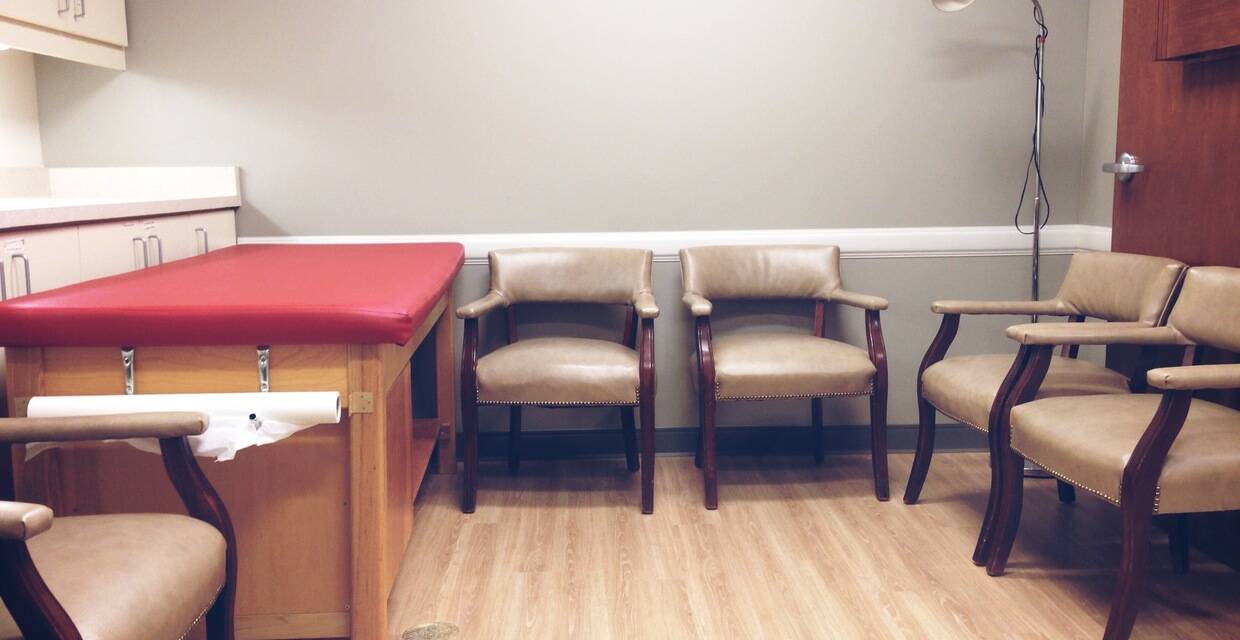Are your janitors costing you patients?
Urgent Care Centers are providing a good alternative to emergency rooms for many people. They are generally less costly, the wait times are shorter, and the staff is less harried, and thus more pleasant to be around.
They may not yet be entirely ubiquitous, but there are certainly more Urgent Care Centers than there are fully fledged hospitals and emergency rooms. Physicians, entrepreneurs, and investors have long recognized the necessity and profitability of these types of facilities. They fill a significant niche in the ecology of supplying Medical Services.
New vs. Old Urgent Care Facilities
Newer facilities, built to modern standards, provide a reasonably high level of service, in an acceptable environment, and patients are generally happy. The design emphasizes easy maintenance.
Older, more dated facilities often score lower on patient satisfaction surveys. This is not due to any intrinsic deficiency, but often because the old-fashioned fluorescent lights are jarring or the facilities do little to create an illusion of cleanliness, comfort, and efficiency.
Passing Judgment on Urgent Care Surroundings
Patients generally don’t judge the efficacy of the medical treatment they are receiving. Instead, they tend to focus on the pleasantness of the surroundings, the disposition of the staff members, and the overall cleanliness of the environment.
Possessing happy staff is usually reliant on appropriate professional conduct and mutual respect. The pleasantness of the environment can be as simple as having a few potted plants or comfortable seating and free Wi-Fi.
Cleanliness is Next to Godliness
Cleanliness however often relies on outside contractors, and choosing the right organization can be problematic. Walking through your facilities, with one or two key staff members at a time, can help you isolate the cleanliness requirements.
Some people will spot elements that might be overlooked by others, and small groups avoid the herd-mentality where everyone just murmurs agreement instead of actively participating. Armed with these requirements it is now time to consider the “Five Rs” of Proper Maintenance.
The 5 R's of Proper Urgent Care Maintenance
1. Right Staff
Cleaning/maintenance staff providers come in several different varieties, but all require Professional References. Your choice may depend on how many UCM centers you operate, and their physical location. If you have a dozen UCMs in five different states, a national provider could supply services for your entire operation under a single contract and thereby save money. You will however need a designated local office to provide oversight for Quality Assurance inspections.
If you operate six UCMs in one state, a regional provider becomes an option, just as three UCMs in one city could be handled by a local provider. The least preferable option is an individual contract for each facility where inconsistencies between terms can result in spotty service, and you lose the economies of scale.
You must also ensure that all employees are background-checked up to the level of the FBI, and that none are on the exclusion list from the office of the Inspector General (U.S. Dept. of Health and Human Services).
2. Right Training
Whomever you choose, they must be certified and compliant with the OSHA, EPA, and U.S. DOT medical waste handling requirements. They need to be certified with blood-borne pathogens training, possess vaccination records for influenza, and pass a tuberculosis skin prick test
3. Right Chemical
Your selection must also demonstrate certification and familiarity with the Chemical Right to Know Act. They must keep themselves, the staff, and the clients safe.
4. Right Equipment
Maintenance crews need proper uniforms, ID badges, liability insurance, and written policies and procedures.
5. Right Time
Cleaning schedules and checklists are essential for proper operation. Ideally cleanup crews visit the facilities after hours, so that the Health Insurance Portability and Accountability Act training do not come into play.
The Takeaway
Meeting the national/regional/local standards for your clinic does not need to be difficult or expensive. On-site staff can manage day-to-day maintenance, which incurs no added cost. You can negotiate with the service supplier for how many days per month you need them to attend your facility.
Your own expertise is your best tool for creating a safe, disinfected, clean, healthcare environment in cooperation with your service providers. Though it may be tempting to take the least expensive service available, take the time to find the service that will best serve to protect all the people and your investment.



